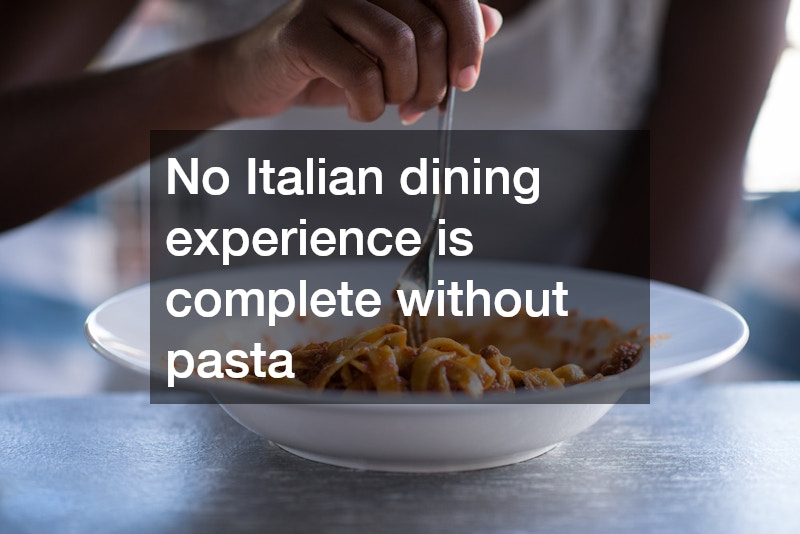

Italian cuisine has long been celebrated for its simplicity, freshness, and ability to bring people together around the table. From comforting pasta dishes to flavorful pizzas and rich desserts, Italian food is cherished worldwide. A local Italian restaurant often highlights the very best of this tradition, offering diners an authentic experience that feels both familiar and exciting. Exploring the menu at a neighborhood eatery can transport you straight to the heart of Italy without ever leaving town.
The Charm of Italian Dining
What makes Italian cuisine so beloved isn’t just the food—it’s the philosophy behind it. Meals are designed to be shared, savored, and enjoyed at a leisurely pace. Ingredients are often seasonal and locally sourced, ensuring freshness in every dish. When you visit a local Italian restaurant, you’re likely to encounter recipes passed down through generations, prepared with the same care and passion as they would be in an Italian home. This dedication to tradition is what makes classic Italian dishes so special. They aren’t just meals; they are cultural experiences that capture the history, flavors, and warmth of Italy itself.
Classic Pasta Favorites
No Italian dining experience is complete without pasta. It is the foundation of countless Italian dishes and comes in a variety of shapes, sauces, and flavors. At a local Italian restaurant, you may find classics like spaghetti carbonara, a Roman dish that combines eggs, Pecorino Romano cheese, guanciale, and black pepper for a rich and creamy flavor. Another favorite is fettuccine Alfredo, a dish known for its indulgent sauce made with butter, Parmesan, and cream, coating wide ribbons of pasta in velvety perfection. Lasagna also holds a special place on Italian menus, featuring layers of pasta, meat sauce, ricotta, and mozzarella baked together to create a hearty and comforting meal. For those who enjoy a balance of tang and cream, penne alla vodka is a timeless choice with its tomato-cream sauce infused with just a splash of vodka for depth. Each of these pasta dishes tells a story of regional heritage while offering a universally satisfying dining experience.
The Timeless Appeal of Pizza
Pizza is perhaps Italy’s most famous culinary export, and while countless variations exist worldwide, nothing compares to the authenticity of pizza crafted in a traditional Italian style. A local Italian restaurant often uses fresh dough, San Marzano tomatoes, and creamy mozzarella to create pies that embody true Italian flavor. The margherita pizza is a perfect example of how simplicity can shine, with tomato sauce, mozzarella, fresh basil, and olive oil combining into a dish that is as balanced as it is delicious. For those looking for variety, the quattro stagioni offers a pizza divided into four sections, each with toppings that represent a different season of the year. Meanwhile, pepperoni or sausage pizzas, though more Americanized, have become staples at Italian-inspired eateries, blending smoky, savory meats with the tang of rich cheese and tomato sauce. Whether cooked in a wood-fired oven or baked on a stone deck, pizza delivers an experience that is both rustic and refined.
Antipasti and Starters That Shine
Before pasta or pizza ever arrives at the table, many Italian meals begin with antipasti. These starters are designed to awaken the appetite and set the stage for what’s to come. A common choice is bruschetta, toasted bread rubbed with garlic and topped with ripe tomatoes, basil, and a drizzle of olive oil. A caprese salad offers another light but flavorful option, featuring fresh mozzarella, tomatoes, basil, and a touch of balsamic glaze. For those craving something crispy, fried calamari served with a side of marinara is a popular choice that balances texture and taste. Some local Italian restaurants even serve prosciutto paired with melon, a sweet and savory combination that captures the essence of Italian cuisine’s focus on simple yet bold flavors.
Indulgent Italian Desserts
Of course, no Italian dining experience is complete without dessert. Italy is known for its sweet treats, which provide the perfect finish to a satisfying meal. Tiramisu remains one of the most beloved, a layered dessert of espresso-soaked ladyfingers, mascarpone cheese, and cocoa powder that delivers richness with every bite. Cannoli are another favorite, featuring crisp pastry shells filled with sweetened ricotta cream and often enhanced with chocolate chips or candied fruit. For something silky and elegant, panna cotta offers a custard-like dessert that is frequently topped with fresh fruit or caramel. And no discussion of Italian desserts would be complete without gelato, the Italian version of ice cream that is denser, smoother, and more intensely flavored than its American counterpart. Each of these desserts reflects Italy’s ability to turn simple ingredients into extraordinary experiences.
Why Local Italian Restaurants Matter
While large Italian chains can be found in many towns, there is something uniquely special about dining at a local Italian restaurant. These establishments often rely on family recipes that have been refined over decades, blending tradition with the personal touch of home cooking. Many use fresh, local ingredients combined with imported staples from Italy, ensuring an authentic flavor profile that honors the cuisine’s roots. Beyond the food, the atmosphere itself often mirrors Italian hospitality, warm and welcoming in a way that invites diners to relax and stay awhile. Choosing a local restaurant also means supporting small businesses and helping them thrive, which strengthens the community as a whole.
Classic Italian dishes never go out of style. From the creamy comfort of pasta to the crispy perfection of pizza, every bite reflects centuries of tradition and passion for food. Visiting a local Italian restaurant allows diners to savor these timeless recipes while also supporting small businesses that keep culinary heritage alive. The next time a craving for bold flavors and warm hospitality strikes, consider stopping by your neighborhood Italian eatery. You’ll find that authentic Italian cuisine isn’t just about what’s on the plate—it’s about sharing food, culture, and community in a way that feels both timeless and unforgettable.
